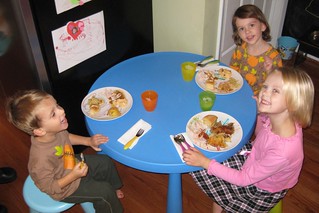This article originally appeared in PR Daily.
I recently had the pleasure of speaking at PRSA Pittsburgh’s Professional Development Day where I spoke about some of the changes that integrated marketing is having on the PR industry. The part of my presentation that drew the greatest reaction from the mostly entry level and student attendees was when I said that the industry has to stop the incessant whining about how PR doesn’t have a seat at the table or how people just don’t “get PR.” I even shared a great quote from my friend Rick Rice that raised some eyebrows –
“The PR industry is in need of disruptive change and none of this generation are even willing to try.”
All of the issues with today’s PR industry – that we’re an afterthought, that people don’t understand what we do or the value we bring, that anyone can do what we do – are nobody’s fault but our own. For years decades, many public relations professionals have chosen to complain about their lack of participation in the big picture rather than taking charge and forcing their way into it. Here’s a hint for all you young PR pros out there:
If you want to sit at the big kid table, start acting like one of the big kids.
What does this mean? Well, to start, it means that you have to start speaking their language. Stop talking about hits, placements, and impressions and start talking about share points, aided and unaided awareness, conversions, leads, and sales. That doesn’t mean that PR is going to be directly responsible for any of these, but it does show that you are invested in the whole of the business, not just your specific workstream. It shows that you can add value beyond the PR section of a deck. Every time a PR pro says “I hate math – that’s why I went into PR,” the industry gets pushed further and further down the ladder.
It means that you have to stop talking about how the sausage is made and start focusing on the impact to the larger business. Have you ever watched a presentation from a brand planner? Compare that to a PR guy’s presentation. The brand planner focuses on the big picture. She gets everyone excited about the insights, the winning strategy and how it leads to the overall end result – the impact that it’s going to have on the business. It’s quick. It’s to the point. It’s visual. But most of all, it’s interesting throughout. The PR guy, on the other hand, will feel the need to justify his existence by diving into the nuts and bolts of each individual tactic. He includes all kinds of bullets and charts and graphs. By the time he’s on phase 3 on slide 14, all of the excitement has been sucked out of the room. He’s now trained everyone in the room to believe that PR is small and tactical rather than big and impactful.
It also means that you have to stop rushing to quick wins and slow down. Before launching into your PR ideas, strategies and tactics, ask to see the overall marketing plan. Ask to see the brand’s business objectives. Ask to see the proof behind the copy points in the ads. Ask if you can talk with customers and employees to learn more about what makes the brand unique. Stop trying to rush around so that you can get some results, any results. Slow down, do your research, understand the business. Make it a required part of the PR process. Don’t give in. As an industry, we have to stop asking “how high?” anytime a client or account manager says jump or we’re never going to get the respect we deserve.
Now that brands can pay to secure native content in The New York Times, The Atlantic, and the Wall Street Journal that achieves similar (if not better) statistics as traditional editorial content, the value proposition of a PR pro has to change. As publishers get better and better at integrating native advertising both effectively and ethically, the PR pro’s old standby – “earned coverage has a lot more credibility paid media” – starts to erode. Given the choice between reallocating some of my paid media dollars to native advertising content, where my impressions, message, and CTAs are guaranteed, in a format that is achieving similar traffic, what’s the incentive to trying to earn editorial coverage where I have none of those guarantees and potentially open my brand up to a negative article? Saving a few dollars? That might work for smaller brands without a large media budget, but what about the big brands with millions of dollars?
Some of us have added things like social media, content marketing, media buying, and SEO/SEM to our resumes to try to stay ahead of the curve but these are short-term, tactical solutions. We have to think bigger, beyond the execution of these roles. We have to understand consumer’s entire journey with the the brand’s category and what, if any role, the brand should play at each stage. In a world where transparency and authenticity have become marketing hallmarks, PR has to think of itself less as a workstream and more as a mindset that’s integrated across everything a brand does.
Someone needs to understand how all of these different parts work together. Why can’t PR assume the role of multi-channel quarterback?
What if PR served as a kind of corporate ombudsman, there to call bullshit on the hyperbolic marketing language and “hit you over the head” marketing tactics?
What if (gasp!) PR led your creative?
What if PR, the people who know the public better than anyone, helped shape a brand’s products and services?
What would happen if we started thinking bigger?



Trackbacks/Pingbacks
[…] Let’s think bigger. […]